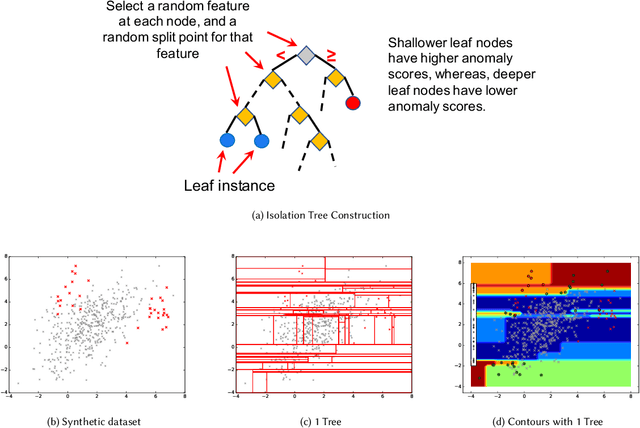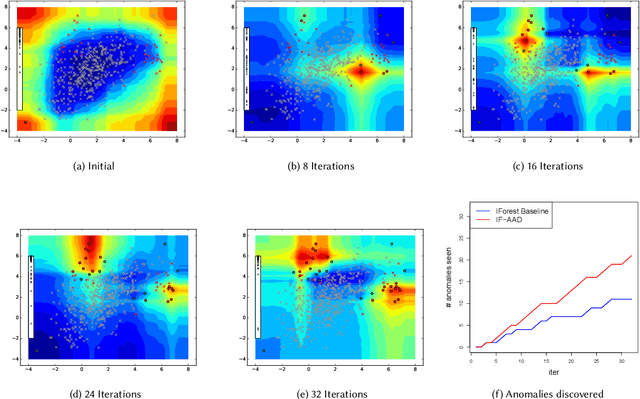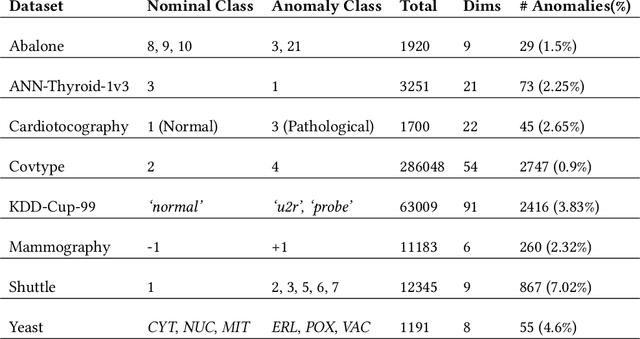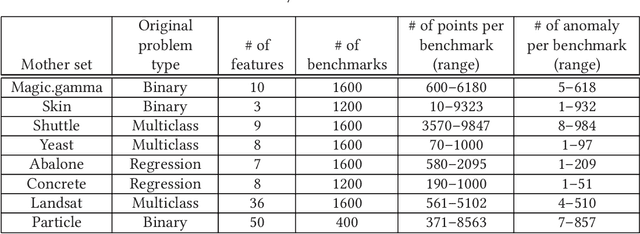Md Amran Siddiqui
Incorporating Feedback into Tree-based Anomaly Detection
Aug 30, 2017



Abstract:Anomaly detectors are often used to produce a ranked list of statistical anomalies, which are examined by human analysts in order to extract the actual anomalies of interest. Unfortunately, in realworld applications, this process can be exceedingly difficult for the analyst since a large fraction of high-ranking anomalies are false positives and not interesting from the application perspective. In this paper, we aim to make the analyst's job easier by allowing for analyst feedback during the investigation process. Ideally, the feedback influences the ranking of the anomaly detector in a way that reduces the number of false positives that must be examined before discovering the anomalies of interest. In particular, we introduce a novel technique for incorporating simple binary feedback into tree-based anomaly detectors. We focus on the Isolation Forest algorithm as a representative tree-based anomaly detector, and show that we can significantly improve its performance by incorporating feedback, when compared with the baseline algorithm that does not incorporate feedback. Our technique is simple and scales well as the size of the data increases, which makes it suitable for interactive discovery of anomalies in large datasets.
Sequential Feature Explanations for Anomaly Detection
Feb 28, 2015



Abstract:In many applications, an anomaly detection system presents the most anomalous data instance to a human analyst, who then must determine whether the instance is truly of interest (e.g. a threat in a security setting). Unfortunately, most anomaly detectors provide no explanation about why an instance was considered anomalous, leaving the analyst with no guidance about where to begin the investigation. To address this issue, we study the problems of computing and evaluating sequential feature explanations (SFEs) for anomaly detectors. An SFE of an anomaly is a sequence of features, which are presented to the analyst one at a time (in order) until the information contained in the highlighted features is enough for the analyst to make a confident judgement about the anomaly. Since analyst effort is related to the amount of information that they consider in an investigation, an explanation's quality is related to the number of features that must be revealed to attain confidence. One of our main contributions is to present a novel framework for large scale quantitative evaluations of SFEs, where the quality measure is based on analyst effort. To do this we construct anomaly detection benchmarks from real data sets along with artificial experts that can be simulated for evaluation. Our second contribution is to evaluate several novel explanation approaches within the framework and on traditional anomaly detection benchmarks, offering several insights into the approaches.
 Add to Chrome
Add to Chrome Add to Firefox
Add to Firefox Add to Edge
Add to Edge